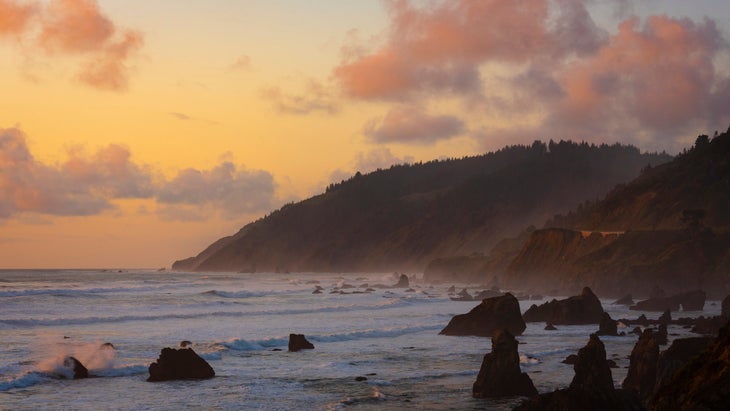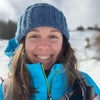Heading out the door? Read this article on the new Outside+ app available now on iOS devices for members! Download the app.
Looking for more oceanside hiking destinations? Check out the full list with an Outside+ membership.
Traveling through some of the last wild coast left in California, the 53-mile Lost Coast Trail follows the edge of the Pacific Ocean past sea lion colonies, sandy beaches, and waterfalls that drop straight to the sea. The same difficult terrain that saved this stretch of land from development makes it a challenging hike, but you’ll be so busy gaping at the scenery that you’ll barely notice the exertion.
It isn’t just beaches and sea cliffs that you’ll find on the Lost Coast, though. The southern half of the trail heads to another iconic Northern California ecosystem: redwood forest. Whether you pick part of the trail to spend a weekend on or do the whole thing in one go, you’ll find something to love on this route.
Share the Trail

The Lost Coast is home to a whole host of critters, from ticks to peregrine falcons to black bears. Make sure you give the larger mammals their distance, especially bears and sea lions. Peregrine falcons and ravens love the rising thermals off the cliffs of the Kings Range; keep an eye out above to spot a passing raptor. Black bears frequent several of the campsites along the trail, and bear canisters are required for backpackers on the northern section. Ticks are especially common on the second half of the trail; long sleeves, long pants tucked into socks, and thorough body checks are the best way to ward them off.
The Trail
The 24.6-mile northern section of the trail sticks to the coast. Start from the trailhead at Mattole; The trail winds through dune grass until mile 2.5, when the defunct but scenic Punta Gorda lighthouse comes into view. Tidepools speckle this part of the trail; take a slight detour to look for anemones, hermit crabs, and barnacles. At mile 5.4 some larger wildlife waits at Sea Lion Gulch, a favorite hangout for sea lions and seals. Soon after you’ll reach a perfect first-night camp site, Cooksie Creek, at mile 6.8.
The next day, head onto a narrow strip of beach beneath sheer gray cliffs (this section of the trail is only hikeable at low tide, so make sure to consult your tide table before heading out). The Randall Creek campsite at mile 8.8 marks the end of the tidal section, but pushing on to Spanish Creek at mile 9 lets you take a snack break among bright orange California poppies. Pitch camp number 2 a few miles farther on at Big Flats (mile 17.1). Deer, black bears, and even bobcats frequent this meadow, so make sure your food is well stored. Finish the section at Black Sands Beach.
To link up with the southern half of the trail, take Beach Road to Shelter Cove Road to Chemise Mountain Road, where you can access the Hidden Valley Trailhead. Finish off the first night of this section at one of several campgrounds near Needle Rock, around mile 9. On day 2, head up into moss-hung redwoods and firs, then drop back down 7.5 miles later at Wheeler Beach, an isolated black sand cove with a scattering of scenic (though windy) campsites. The next section of the hike heads back into the woods for 3.7 miles, then drops into a grove of old-growth redwoods at Little Jackass Creek. Head up and over a couple forested ridgelines for 7.2 miles before heading back to the water at Usal Beach, where the trail ends.
Sign up for Outside+ today.
From 2022
